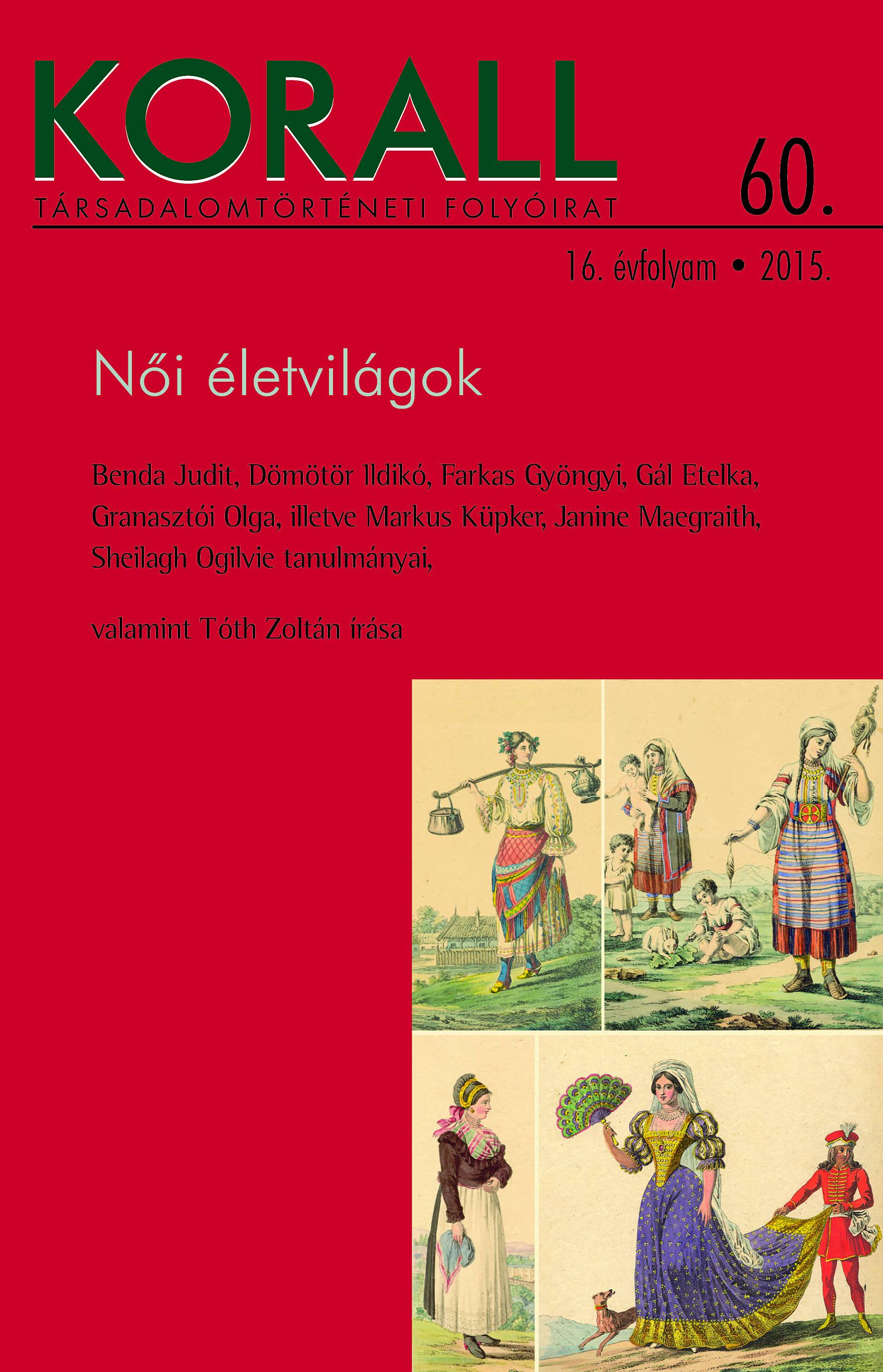A csendes háttér
The Silent Hinterland
Work Opportunities for Women in Medieval Buda
Author(s): Judit BendaSubject(s): History
Published by: KORALL Társadalomtörténeti Egyesület
Keywords: History;
Summary/Abstract: The study briefly summarises what surviving written sources tell us about medieval women and their work, using sources from between the 1270s to the mid-sixteenth century. The structure of women’s work was relatively simple in the cities of the medieval Kingdom of Hungary. Besides the prevalent traditional homemaker role, the number of opportunities where women replaced men in the workforce steadily increased. Women were of medium height, approximately 160cm (5ft 3”). Girls living beyond their tenth year had an average life expectancy of 40–60 years. The court of archduchess and regents comprised of 15–20 women led by the lady senechal, followed by the ladies in waiting and chamberlains, down to laundresses, servants and maids. Women living in monastic orders were accompanied by lay sisters and servants running the household. In the early days, the consecrated nuns performed a variety of jobs including menial tasks. In urban society widows were keen to remarry as soon as possible to avoid temporary financial insecurity. Following the death of the husband, inheritance dictated that all his movable and immovable property went to the widow and his children. Until remarrying, the widow had complete control over the building inherited in part or total. Guild regulations stipulated that widows of guild members either marry another member of the same guild or the late husband’s apprentice. Similarly to artisans, merchants’ widows were allowed to continue their husband’s trade temporarily. The most frequent work opportunity for women in medieval Buda, however, was market trading. Their number, ethnicity, place of work and range of goods sold were all strictly regulated. They were referred to as fruit, pottage, cheese, poultry, game, vegetable or salt traders according to the goods they sold. The presumable presence of procuresses, prostitutes and witches in Buda is attested to only by entries in the Lawbook of Buda.
Journal: Korall - Társadalomtörténeti folyóirat
- Issue Year: 2015
- Issue No: 60
- Page Range: 11-40
- Page Count: 30
- Language: Hungarian

